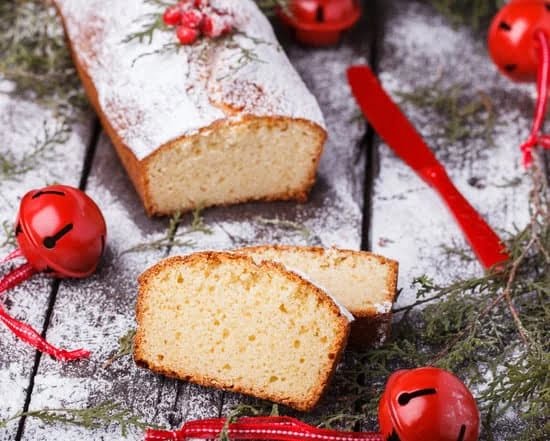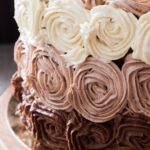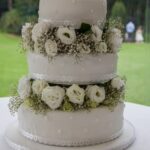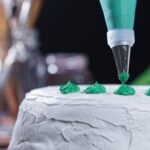When it comes to creating a visually stunning and delicious cake, sugar cake decorations play a vital role in enhancing the overall appearance and aesthetic appeal. From elegant fondant designs to delicate edible sugar flowers, these decorations can transform a simple cake into a work of art. Whether you’re a seasoned baker or a novice in the kitchen, understanding the importance of sugar cake decorations is key to achieving professional-looking results that will impress any crowd.
The world of sugar cake decorations offers a wide variety of options to choose from, each with its own unique look and texture. Fondant, gum paste, royal icing, and edible sugar flowers are just some examples of the diverse range of decorations available for elevating cakes to the next level. These decorative elements not only add beauty but also provide an opportunity for creativity and personal expression in cake design.
In this comprehensive guide, we will explore the different types of sugar cake decorations, techniques for creating them, tips for their successful use, factors to consider when choosing them, customization options, troubleshooting common issues that may arise when working with them, as well as the latest trends in sugar cake decorations.
Whether you’re planning an elaborate wedding cake or simply want to enhance a homemade treat, mastering the art of sugar cake decorations will undoubtedly take your baking skills to new heights.
Types of Sugar Cake Decorations
When it comes to decorating a cake, sugar decorations play a significant role in enhancing its overall appeal and aesthetics. There are several types of sugar cake decorations available, each offering unique textures, flavors, and design possibilities. From fondant to gum paste to royal icing and edible sugar flowers, the options for creating stunning sugar cake decorations are diverse and limitless.
- Fondant: Fondant is a versatile and pliable sugar paste that can be rolled out and draped over cakes to create a smooth, flawless finish. It is popular for wedding cakes and special occasion cakes due to its elegant appearance.
- Gum Paste: Gum paste is a stiffer sugar paste that can be molded into intricate shapes such as flowers, leaves, and figurines. It dries hard and holds its shape well, making it ideal for creating detailed and realistic decorations.
- Royal Icing: Royal icing is made from powdered sugar, egg whites or meringue powder, and lemon juice or vinegar. It dries to a hard, glossy finish and is commonly used for intricate piping work on cakes as well as making delicate lace-like designs.
- Edible Sugar Flowers: Edible sugar flowers are meticulously crafted from gum paste or fondant to resemble real flowers. They add a touch of elegance and sophistication to any cake, especially wedding cakes and formal event cakes.
By mastering the art of working with these different types of sugar cake decorations, bakers can elevate their creations to new heights of artistry. With the right techniques and tools, they can bring their vision for a beautifully decorated cake to life while impressing customers with stunning designs that taste just as good as they look.
Whether it’s a playful birthday cake adorned with colorful fondant accents or an elaborate wedding cake embellished with delicate gum paste flowers, the possibilities for using sugar cake decorations are endless.
Techniques for Creating Sugar Cake Decorations
Creating sugar cake decorations can be a fun and creative process that allows bakers to add a personal touch to their cakes. There are several techniques for creating different types of sugar cake decorations, including molding, shaping, and painting. Each technique requires attention to detail and practice to master, but the results can be truly stunning.
Molding Techniques
One of the most common techniques for creating sugar cake decorations is molding. This involves using fondant or gum paste to mold shapes and figures such as flowers, leaves, or even small figurines. To start, knead the fondant or gum paste until it is soft and pliable. Then, use your hands or specialized molding tools to shape the sugar paste into the desired form. Once molded, allow the decorations to dry and harden before placing them on the cake.
Shaping Techniques
Shaping sugar cake decorations involves working with gum paste or fondant to create three-dimensional designs such as bows, ribbons, or intricate patterns. To shape decorations, roll out the fondant or gum paste and use cutting tools or templates to create specific shapes. You can also use sculpting tools to add texture and details to your creations before letting them dry.
Painting Techniques
Painting on sugar cake decorations is another way to add color and detail to your creations. Edible food coloring gels or dusts can be mixed with clear alcohol (such as vodka) to create an edible paint. This paint can then be used to add shading, highlights, or intricate designs onto your sugar cake decorations.
By mastering these molding, shaping, and painting techniques for creating sugar cake decorations, bakers can elevate the visual appeal of their cakes and impress their customers with beautifully decorated treats that not only taste delicious but also look stunning.
Tips for Using Sugar Cake Decorations
When it comes to using sugar cake decorations, there are several important tips and tricks to keep in mind in order to achieve the best results. Whether you are working with layer cakes, wedding cakes, or cupcakes, proper technique and attention to detail can make all the difference in the final presentation of your confectionary creation.
Proper Placement and Application
One of the most crucial tips for using sugar cake decorations is ensuring proper placement and application. For instance, when decorating a layer cake, it’s important to place the decorations strategically to create an aesthetically pleasing design. It’s also essential to apply the decorations with a gentle touch, especially when working with delicate fondant or gum paste designs.
Consider the Climate
Another important tip for using sugar cake decorations is considering the climate in which the cake will be displayed. In warmer temperatures, for example, certain sugar decorations may be more prone to melting or losing their shape. To combat this issue, consider using royal icing or other heat-resistant decorating techniques for outdoor events or warm indoor environments.
Coordinating With Flavors and Textures
In addition to proper placement and consideration of climate, it’s also crucial to coordinate sugar cake decorations with the flavors and textures of the cake itself. For instance, if you are decorating a rich chocolate wedding cake, consider using bold-colored fondant or edible sugar flowers as accents. Conversely, if you are working on a light and airy vanilla cupcake, opt for delicate gum paste designs or pastel-colored royal icing details.
By following these tips and tricks for using sugar cake decorations, you can ensure that your confections not only look visually stunning but also taste delicious and complemented by their decorative elements. Keep in mind these considerations when working with various types of cakes so that your creations truly stand out in both appearance and taste.
Choosing the Right Sugar Cake Decorations
When choosing the right sugar cake decorations, there are several factors to consider that can greatly impact the overall appearance of the cake. One of the most important things to think about is the theme of the event or occasion for which the cake is being made.
For example, a child’s birthday cake might call for fun and colorful sugar decorations like cartoon characters or animal shapes, while a wedding cake may require more elegant and subtle designs such as intricate lace patterns or delicate florals.
Another crucial consideration when selecting sugar cake decorations is the color scheme of the cake. The decorations should complement and enhance the colors used in the frosting and overall design of the cake. It’s essential to ensure that the colors of the sugar decorations coordinate with those used in other elements of the cake, such as ribbons, flowers, or edible glitter.
Personal preferences also play a significant role in choosing sugar cake decorations. Factors such as individual taste, style, and aesthetic sensibilities should be taken into account when deciding on which decorations to use. Some people may prefer minimalist and understated designs, while others may gravitate towards bold and eye-catching embellishments. Ultimately, personal preferences should guide the selection process to ensure that the finished cake reflects the desires and tastes of its intended recipient.
Overall, selecting the right sugar cake decorations involves careful consideration of multiple factors including theme, color scheme, and personal preferences. Keeping these factors in mind will help ensure that the chosen sugar decorations contribute to creating a visually stunning and harmonious end result.
| Factors to Consider | Examples |
|---|---|
| Theme | Child’s birthday – fun and colorful designs; Wedding – elegant and subtle patterns |
| Color Scheme | Coordinate with other elements of the cake; Complement frosting colors |
| Personal Preferences | Taste, style, aesthetic sensibilities should guide selections |
Customizing Sugar Cake Decorations
- Birthdays: For birthday cakes, consider personalizing the sugar cake decorations with the age of the person celebrating, their name, or their favorite colors and hobbies. Customized fondant figures or edible sugar flowers can be shaped and colored to represent the birthday celebrant’s interests, whether it’s sports, music, animals, or anything else they love.
- Weddings: When it comes to weddings, the bride and groom often want their cake to reflect their unique style and theme. Customized sugar cake decorations for weddings may include intricate fondant designs inspired by the wedding invitations, lace patterns on the dress, or even personalized toppers featuring a miniature version of the couple.
- Holidays: During holidays such as Christmas, Easter, Halloween, and more, themed sugar cake decorations can truly set the tone for the celebration. Whether it’s Santa Claus and reindeer for Christmas cakes, bunnies and Easter eggs for Easter cakes, or spooky characters for Halloween cakes, customizing sugar cake decorations can make any holiday-themed cake stand out.
When customizing sugar cake decorations for specific themes or occasions like birthdays, weddings, or holidays; it’s important to consider the color scheme and overall aesthetics of the event. Additionally; remembering that personal preferences play a significant role in creating custom designs is essential. By allowing creativity to flow freely; customized sugar cake decorations can make any occasion extra special.
Overall; customizing sugar cake decorations provides an opportunity to elevate a plain cake into a stunning centerpiece that will surely impress guests while adding a personal touch that makes it truly memorable. From simple shapes and colors to elaborate designs tailored to specific events; these custom creations allow anyone to showcase their personality and creativity through edible art.
Troubleshooting Sugar Cake Decorations
Creating beautiful and intricate sugar cake decorations can be a rewarding experience, but like any art form, it comes with its own set of challenges. There are common issues that may arise when working with sugar cake decorations, such as cracking, sticking, or melting. Understanding how to troubleshoot these problems can make a significant difference in the success of your cake decorating endeavors.
One common issue that many people encounter when working with sugar cake decorations is cracking. This can happen when the sugar paste or fondant dries out too quickly, causing it to become brittle and prone to cracking. To prevent this, it’s crucial to work efficiently and keep the paste covered when not in use. Adding a small amount of vegetable shortening or glycerin to the paste can also help improve its elasticity and reduce the risk of cracking.
Sticking is another common problem that decorators face when using sugar cake decorations. This occurs when the decorations adhere to the work surface or tools, making it difficult to handle them properly. To avoid sticking, be sure to lightly dust your work surface and tools with powdered sugar or cornstarch before working with the sugar paste. Additionally, using a non-stick rolling pin and a sharp cutting tool can help minimize sticking and make the process much smoother.
Finally, melting can be an issue for sugar cake decorations, especially in warm or humid environments. To prevent this from happening, store your finished decorations in a cool, dry place until you’re ready to use them.
If you live in a particularly humid climate, you may need to consider investing in a dehumidifier for your decorating space. Taking these precautions can help ensure that your beautifully crafted sugar cake decorations maintain their shape and integrity until they are ready to adorn your cakes.
| Common Issue | Troubleshooting Tip |
|---|---|
| Cracking | Keep paste covered when not in use; Add vegetable shortening or glycerin |
| Sticking | Dust work surface & tools with powdered sugar or cornstarch; Use non-stick rolling pin & sharp cutting tool |
| Melting | Store finished decorations in cool dry place; Consider using dehumidifier for decorating space |
Trends in Sugar Cake Decorations
As the world of baking and cake decorating continues to evolve, so do the trends in sugar cake decorations. Keeping up with the latest designs, colors, and techniques can help pastry chefs and home bakers stay ahead of the curve when it comes to creating visually stunning and eye-catching cakes. Whether it’s a birthday celebration, a wedding reception, or a holiday gathering, staying informed about the current trends in sugar cake decorations can elevate any special occasion.
One popular trend in sugar cake decorations is the use of metallic colors. Edible gold and silver accents are becoming increasingly popular for adding a touch of elegance and sophistication to cakes. These metallic hues can be incorporated into various types of sugar cake decorations including fondant, gum paste, royal icing, and edible sugar flowers. The shimmering effect created by metallic colors adds a modern and luxurious touch to any cake design.
Another trend that has been gaining traction in recent years is the use of hand-painted sugar cake decorations. From intricate floral designs to whimsical patterns, hand-painted elements add a unique and personalized touch to cakes. This technique allows for endless creativity and customization, making each cake a one-of-a-kind masterpiece. Whether it’s delicate brush strokes or bold watercolor effects, hand-painted sugar decorations are sure to make a statement.
In addition to designs and colors, innovative techniques for creating three-dimensional sugar cake decorations have also become popular. Intricately crafted figurines, sculpted characters, and lifelike floral embellishments are in high demand for special occasions like weddings and milestone celebrations.
These elaborate sugar creations add depth and dimension to cakes, making them stand out as true works of art. Keeping up with these trends can inspire both professional bakers and hobbyists to push their creative boundaries when it comes to sugar cake decorations.
Conclusion
In conclusion, sugar cake decorations play a crucial role in enhancing the visual appeal of cakes and making them stand out. From fondant to edible sugar flowers, there are a variety of options available for creating stunning and unique cake decorations. By using molding, shaping, and painting techniques, individuals can unleash their creativity and personalize their cake decorations to match specific themes or occasions.
Choosing the right sugar cake decorations is essential in ensuring that they complement the overall design and color scheme of the cake. Whether it’s a layered cake, wedding cake, or cupcakes, proper selection and placement of sugar cake decorations can take the presentation to the next level. Additionally, staying updated with the latest trends in sugar cake decorations provides inspiration for trying new designs, colors, and techniques to create visually stunning cakes that leave a lasting impression.
Overall, understanding how to create, customize, troubleshoot, and stay current with trends in sugar cake decorations is key to mastering the art of decorating cakes. With practice and patience, individuals can elevate their baking skills by incorporating eye-catching sugar cake decorations into their creations. So whether it’s for a birthday celebration, wedding reception, or holiday gathering, utilizing sugar cake decorations is an effective way to make any occasion extra special.
Frequently Asked Questions
How Do You Make Sugar Decorations for Cakes?
Sugar decorations for cakes can be made by mixing powdered sugar, egg white, and any food coloring or flavoring desired. First, beat the egg white until frothy, then gradually add the powdered sugar until a stiff mixture is formed. Then shape it into the desired decorations and let them dry.
How Do You Stick Sugar Decorations to a Cake?
To stick sugar decorations to a cake, use edible glue made of edible adhesive gel or a small amount of royal icing. Apply a small dot of edible glue to the back of the decoration and gently press it onto the cake surface. Allow time for the glue to set before serving.
How Long Does Edible Glue Last?
The shelf life of edible glue depends on its ingredients and how it is stored. Generally, if kept in an airtight container at room temperature, edible glue made from glucose syrup or corn syrup can last for several months. However, it’s always best to check for any changes in consistency or smell before using it on a cake.

Welcome to our cake decorating blog! My name is Destiny Flores, and I am the proud owner of a cake decorating business named Cake Karma. Our mission is to provide delicious, beautiful cakes for all occasions. We specialize in creating custom cakes that are tailored specifically to each customer’s individual needs and tastes.





